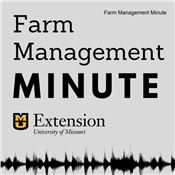September Farm Management News And Notes From MU Extension

COLUMBIA, MISSOURI
A farm’s approach to marketing often affects whether the operation has the potential to sustain itself for the long term. These farm management news and notes from University of Missouri Extension will help you choose products and product features to market, educate buyers about the purchase process and navigate product pricing.
Weigh harvesting corn for grain or silage Because of recent drought conditions, farmers are considering whether to harvest corn for grain or silage. To make your decision, first assess whether estimated corn grain revenue will at least cover harvest costs. If not, then look more closely at silage as an option.
MU agricultural economist Ray Massey says making the correct decision also means sorting through crop insurance adjustments and the value of silage versus grain. Differences in nutrient removal and product marketability complicate the decision.
If you planted corn for grain and do want to chop it as silage, then hold off on harvesting until your insurance adjuster gives permission.
Learn more about drought’s effect on crop management decisions in the MU Extension publication “Drought-Related Issues in Forage, Silage and Baleage” at mizzou.us/DroughtQuestions.
Keep your herd healthy through dehorning and selecting polled genetics Dehorning your calves or incorporating polled genetics into your herd can keep your cattle healthy and help you avoid price docking, says MU Extension ag and environment specialist Jason Morris.
Missouri cattle producers typically receive higher premiums for hornless cattle. That’s because horned animals require more space in transit and at the feed bunk and feedlot. They also may cause injuries, such as bruising, to other cattle. Therefore, when a seller markets cattle with horns, buyers accept more risk.
After dehorning, the animals often gain weight more slowly the first few weeks. However, dehorned and naturally polled calves typically have no significant differences in final average body weight. Further, cattle dehorned at least four weeks before shipping have a reduced rate of sickness and death.
Learn more on the economics of dehorning cattle at mizzou.us/Dehorning.
Guide consumers through the steps to buy meat direct from the farm If you’re selling meat by the whole, half or quarter of an animal, work with your customers to help them find the animal and meat processor that fits their needs.
Ag business specialist Jennifer Lutes encourages producers selling finished animals to provide prospective buyers with information such as when an animal will be ready, how the animal is priced and what the animal will weigh.
Also, link your customers with a processor or two to consider. Suggest that they get to know a processor and its services, such as options for packaging, curing and aging meat, before hiring the business to handle an animal. You’ll want to explain that the processor will provide a cut sheet, which the consumer can use to instruct the processor about the desired cuts, package sizes and further processed products to prepare.
To assist consumers, see the MU Extension publication “Five Steps to Buying Meat Direct From the Farm,” available for free download at mizzou.us/BuyingMeat.
Track crop basis to decide when to sell corn and soybeans By comparing historical and current crop cash basis, you can gauge whether to sell or store grain harvested this fall, says ag business specialist David Reinbott. Reinbott recommends looking at basis patterns – the difference between local cash and futures prices – from the past five to seven years to set the historical benchmark.
These examples from southeastern Missouri show how basis serves as an indicator to sell or store a crop:
For corn harvested in September, the five-year historical cash basis is a negative 16 cents per bushel using a December futures contract.
In mid-September, cash basis was a positive 35 cents. This relationship encourages cash sales, not storage.
The five-year historical soybean basis for October is a negative 23 cents using a November futures contract. Cash soybean basis bids in mid-September were a positive 30 cents. Again, the market is incentivizing cash sales.
Learn more in the MU Extension publication “An Introduction to Basis,” available for free download at mizzou.us/Basis.
Know your break-even price
When deciding how much to charge for a value-added agricultural product, first compute your break-even price. That will help you set a price that lets you profit instead of post a loss, says agricultural economist Ryan Milhollin.
Per unit, a break-even price equals fixed costs plus variable costs.
Fixed costs include rent and equipment expenses. These costs do not change regardless of production output.
Variable costs change in proportion to your production volume. They include expenses for direct materials and shipping.
As you price a product, think of the break-even price as a price floor. You’ll lose money if you set a lower price. Consumers’ willingness to pay will affect how much you mark up a product above the break-even price.
See break-even pricing examples in the publication “Break-Even Pricing, Revenue and Units,” available for free download at mizzou.us/BreakevenPricing. ∆